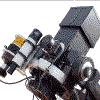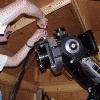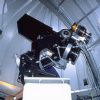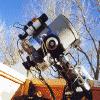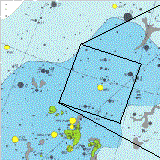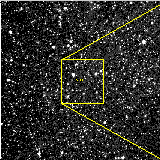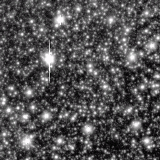STARE's method of detection relies on the edge-on alignment of the extrasolar system. If a planetary system is oriented so that Earth lies near the plane of the planet's orbit, then once per orbit the planet passes between its star and the Earth, causing a transit. This orientation is more likely for planets orbiting close to their parent star. During a transit, the planet blocks some of the light from the star, causing the star to appear dimmer (see figure below). For Jupiter-sized planets transiting Sun-sized stars, the expected dimming of the star's light will be about 1%, and the duration of the transit should be a few hours.
Move mouse over figure to view animated transit (884 K continuous loop GIF, requires JavaScript to be enabled); Click on figure to view or download MPEG animation (783 K). problem?
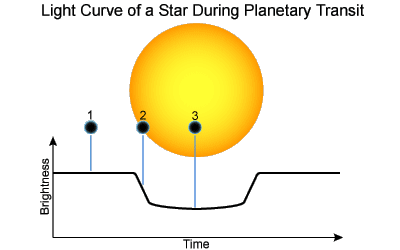
Figure based on one by Hans Deeg, from 'Transits of Extrasolar Planets'
To look for such a transit, the STARE telescope takes timed exposures of the same field-of-view all night for as many nights as the field is favorably positioned (usually around 3 months). When an observing campaign is completed for a particular field, the multitude of data are run through software which, after correcting for many sources of distortion and noise, produces light curves for thousands of stars in the field. Other software is run to analyze the processed data for variable stars and transit candidates. It takes two or more transits (or cycles in a variable star) to discern the period of the orbit (or the variability).
The STARE method therefore favors giant planets orbiting sun-like stars in close orbits. The results of successful radial-velocity planetary searches have shown that planetary systems of this type could be quite common.

